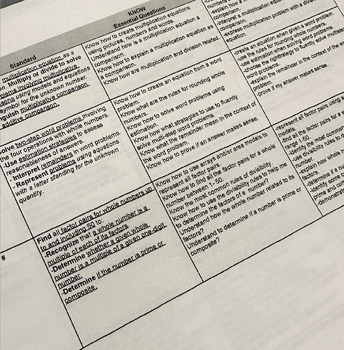NEW 3rd Grade Deconstructed Math Standards
- Google Drive™ folder

Description
As educators, we play a vital role in preparing our students for the futre. To effectively guide students toward academic success, it is imperative for educatorss to have a deep understanding of the educational standards. Educational standards provide a clear roadmap for what students should know and be able to do at each grade level. They act as a GPS for educators in their instructional journey. Knowing the standards provide educators with the necessary tools to provide high-quality instruction, assess student progress, differentiate their teaching, and so much more. When educators embrace the standards, they empower themselves to be more effective educators.
While planning for this new role as a Math Coach, I took some time deconstruct the math standards for grades 3-5, using resources from my state, district, and books. This deconstruction led to a file that includes a break down of the standard with Essential Questions and I Cans.


